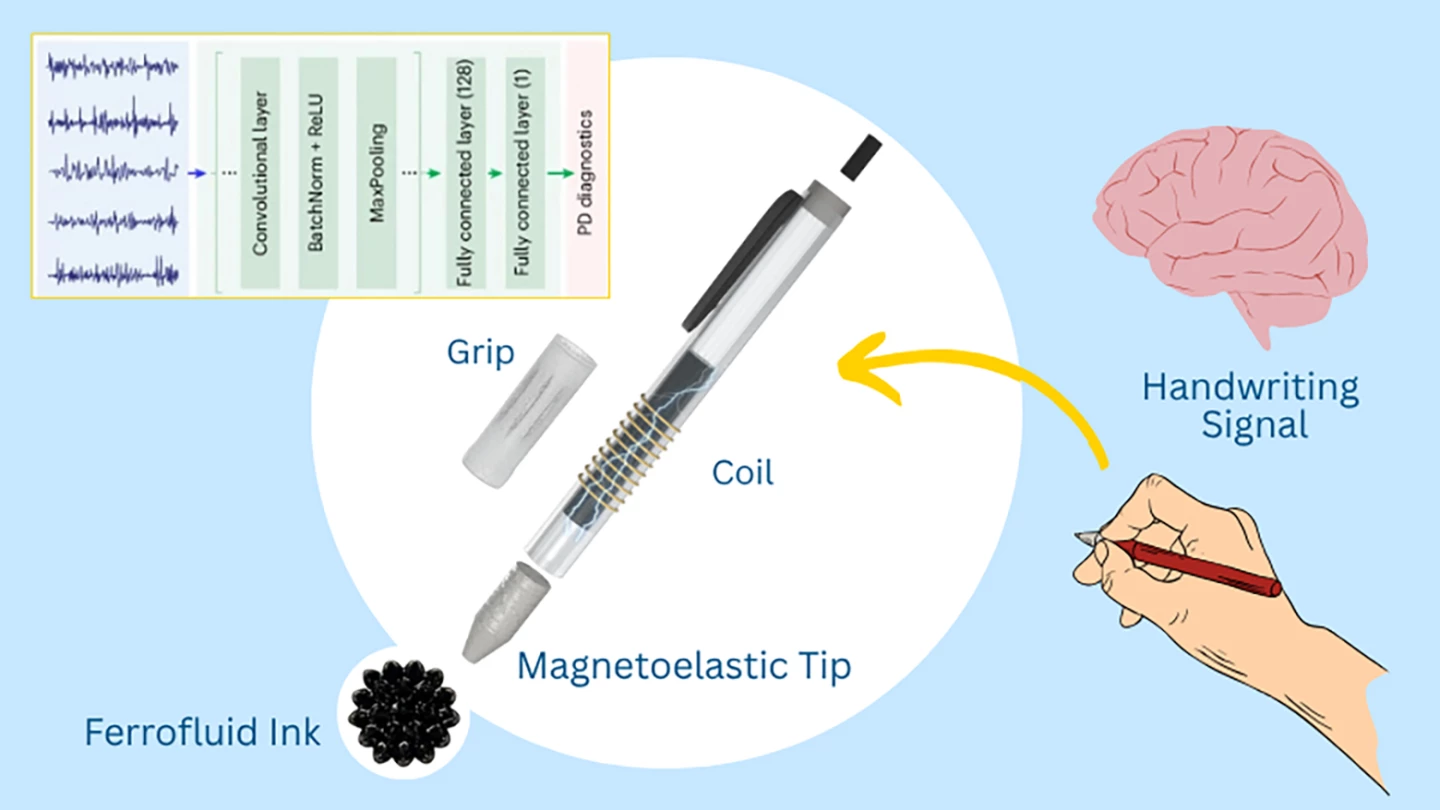We’ve already seen a pen that helps people with Parkinson’s disease to write clearly, but this one is a little different. By assessing its user’s hand movements as they write, it can provide an early warning that they’re developing the condition.
Currently being developed by Assoc. Prof. Jun Chen and colleagues at the University of California Los Angeles (UCLA), the pen does contain ink, but it doesn’t actually write. Instead, it detects tiny telltale hand movements produced by Parkinson’s-related tremors, which might otherwise go unnoticed until the disease has progressed much further.
The magnetoelastic tip of the pen is composed of a soft silicone matrix with tiny magnetic particles embedded throughout it. Directly above that tip, within the pen’s barrel, is a sealed reservoir filled with a ferrofluidic ink. Conductive yarn is coiled around the outside of the barrel, and covered with a soft polymer grip.

Jun Chen Lab/UCLA
As the user moves the tip of the pen across a surface while performing a writing exercise, the tip compresses under pressure, altering the orientation and spacing of the magnetic particles. This produces a shift in the magnetic flux of the tip. The flux in the ink also changes, as the magnetized particles within it move as it sloshes.
These combined flux variations induce voltage signals in the coil surrounding the barrel. AI-based software on a linked computer analyzes those signals, using them to compare the user’s hand movements to those of a non-Parkinson’s baseline. If even the tiniest of tremors are present, they will be detected.
In a test of the technology, 16 test subjects used the pen to perform exercises such as drawing continuous wavy lines, drawing continuous spirals, and writing the capital letters “MEGPEN.” The pen’s software identified the three individuals who were already known to have Parkinson’s, with an average accuracy of 96.22%.
“Detection of subtle motor symptoms unnoticeable to the naked eye is critical for early intervention in Parkinson’s disease,” says Chen. “Our diagnostic pen presents an affordable, reliable and accessible tool that is sensitive enough to pick up subtle movements and can be used across large populations and in resource-limited areas.”
The research is described in a paper that was recently published in the journal Natural Chemical Engineering.



